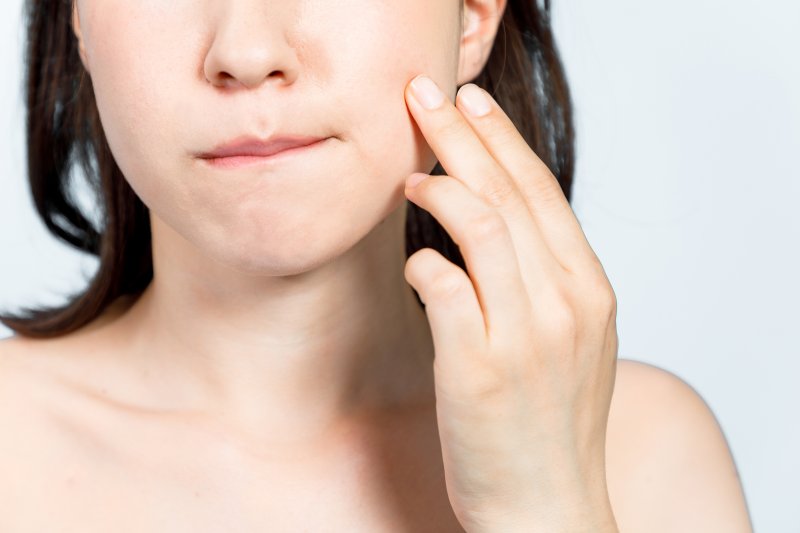The temporomandibular joint, which is commonly referred to as the TMJ, is the joint that connects the lower jaw (mandible) with the upper jaw (maxilla). A unique structure, it has a greater range of motion than most joints. While the greater mobility allows you the ability to speak, chew food and perform other functions, it can, over time, contribute to a painful problem called TMJ disorder. As you continue reading, you’ll learn more about the condition and how your dentist in Dublin can help you recover.
How the TMJ Works
The simplest way to describe the TMJ is as a door hinge that opens and closes the mouth. It allows other movements as well, which includes a sliding motion called translation. This involves your lower jaw moving down and forward, which then allows the TMJ to accommodate such activities as eating, yawning and singing.
Possible Problems with the TMJ
Because the TMJ is so frequently used, it can become fractured, inflamed or sore, which can lead to a limited range of motion and pain that can radiate from the head and neck areas. With its unique placement, simply taking anti-inflammatory medications usually won’t suffice for healing.
Here are some of the possible contributors to TMJ disorder:
- Stress
- Unusual fatigue
- A change in your bite
- Teeth grinding
The first step to recovering is to visit your local dentist, as he or she has the expertise to diagnose the issue and create a treatment plan to restore your normal functionality.
How TMJ Disorder Can be Treated
Because TMJ disorder is so common these days, most dentists will check for signs of the condition at a regular dental exam. If there are any indicators, the following may be employed to aid in your recovery:
- Balancing or equilibrating your bite
- Fitting you with a custom-designed bite appliance
- Providing some stress-reducing tips
Additionally, patients diagnosed with TMJ disorder should avoid chewing gum or attempting to bite into certain types of candy. The harder types of foods like carrots and nuts should be avoided as well. It also helps to take smaller bites and to move the food from side to side when chewing.
You should be sure to maintain good posture to help relieve any discomfort. Additionally, you can perform a light temple and jaw massage to stimulate circulation and relax the muscles.
When you visit your dentist to be examined, these and other strategies for relief can be revisited. By taking action, you can finally regain some normalcy and the full function of your jaw.
About the Author
Dr. Eric Buck is a graduate of The Ohio State University College of Dentistry. To stay abreast of the latest advancements in dental care, he maintains several professional affiliations, which includes memberships with the Spear Education Society and the Academy of General Dentistry. Dr. Buck treats TMJ disorder at Distinctive Smiles, and he can be reached for more information through his website.

